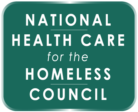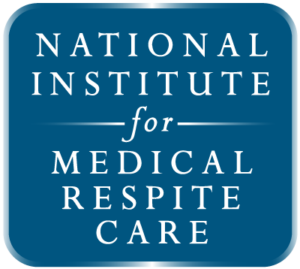Research: Community Health Workers (CHWs)
CHWs and Health Care for the Homeless
A Resource Guide for HCH Programs
The CHW model of care is centered on a philosophy of peer support. The key strength of CHWs is their intimate knowledge of the environments and experiences of their clients. Their expertise comes from lived experience. That experience makes it possible for CHWs to reach and engage individuals who may otherwise not respond to health care professionals, no matter how good the intent or persistence of outreach efforts.
The first large scale CHW program began in the 1920s as an effort to reach rural populations in China with high infant mortality rates and low life expectancy ages. Farmers and other lay community members were given basic medical training in an effort to bring health care to areas where professional medical providers did not live. These “Barefoot Doctors” focused primarily on preventative health care, health education, and basic treatment of common illnesses.
As a result, infant mortality rates declined, major epidemics were controlled, and health literacy among the population increased.[i] The success of this movement shed light on the potential impact trained lay persons can have on the health of their community.
The emotional and informal psychological support a CHW provides is often as meaningful to individuals as that received from trained clinicians. The social support of CHWs can also reduce feelings of isolation clients may have and may create a space for a client to safely disclose an untreated illness or trauma.[ii]
CHWs and HCH
People experiencing homelessness are among the most frequent and costly of health care users. One large scale study supported by the U.S. Department of Health and Human Services, Agency for Health Research and Quality found that single men and women experiencing homelessness visit the emergency department 9 to 12 times more (respectively) than their housed counterparts.[iii]
In the hospital setting, individuals experiencing homelessness are often treated for their acute illness or injury but not provided the wrap around supports needed for long term wellness. What’s more, individuals experiencing homelessness are often provided with hospital discharge instructions that are difficult to follow while living on the streets.
One study looking at post-hospital transitions for low-income populations found that patients often leave hospitals feeling powerless due to socioeconomic factors, misalignment of patient and care team goals, competing priorities, socioeconomic constraints affecting their ability to perform recommended behaviors, abandonment after discharge, and loss of self-efficacy resulting from failure to perform recommended behaviors.[iv]
Health Care for the Homeless projects recognize the complex needs of homeless persons and strive to provide a coordinated, comprehensive approach to health care including substance abuse and mental health services.[v] HCH projects do this by training their workforce in the complex needs of individuals experiencing homelessness and by adopting evidence-based approaches such as trauma-informed care, harm reduction, and motivational interviewing among other strategies.
HCH projects across the country are increasingly adding CHWs to their workforces, which has prompted the Health Resources and Services Administration (HRSA) to add new reporting options to account for utilization of CHWs within HRSA’s Uniform Data System, the federal reporting mechanism for Health Centers.
CHWs support the work of HCH projects by honing in on the challenges, strengths, and motivations of their clients and their daily lives. Not bound by the four walls of the clinic or a focus on specific diagnoses or treatments, CHWs work to eliminate barriers for their clients through community education, accompaniment, and coordination of enabling services. Tasks performed by CHWs are diverse; however, CHWs in the HCH setting are most often involved in case coordination/management, outreach, and enrollment into care. CHWs are also able to assist their peers in accessing and utilizing the often convoluted health care systems.
CHWs have been linked to improved outcomes, reduced costs, and advanced care delivery.[vi],[vii]In addition to expected improvements in physical health outcomes, there are also psychological benefits for consumers as they learn health maintenance skills that minimize their need for medical intervention.
That shared experience is part of what makes CHWs unique in their ability to connect with clients in ways providers often cannot. Studies have shown that in programs serving individuals who are experiencing homelessness or struggling with substance abuse, shared life experience may be more important than shared personal characteristics. The U.S. Public Health Service (USPHS) evaluated a small sample of programs employing CHWs in an effort to better understand their use in federal programs. In focus groups from that study, clients expressed appreciation for “the street smarts that come from the experience of being homeless.”[viii]
The next section will describe the diverse roles and responsibilities CHWs can employ in the HCH setting.
Resources
Community Health Workers in Health Care for the Homeless
Community Health Workers: Financing & Administration
Healing Hands: Speaking from Experience: The Power of Peer Specialists
Community Catalyst: The Role of Community Health Workers in Health System Transformation
Policy Evidence Assessment Report: Community Health Worker Policy Components
References
[i] Perry, H. (September 2013). A Brief History of Community Health Worker Programs. Retrieved from: http://www.mchip.net/sites/default/files/mchipfiles/02_CHW_History.pdf
[ii] Partners in Health. (January 2013). Unit 7: Improving outcomes with community health workers. Retrieved from: http://www.pih.org/library/pih-program-management-guide/unit-7-improving-outcomes-with-community-health-workers
[iii] Hwang, S. & Henderson, M.J. (2010). Health Care Utilization in Homeless People: Translating Research into Policy and Practice. Agency for Healthcare Research and Quality Working Paper No. 10002.
[iv] Kangovi, S., Barg, F.K., Carter, T. Levy, K., Sellman, J.,Long, J.A., and Grande, D.. (2013). Challenges Faced by Patients with Low Socioeconomic Status During the Post-Hospital Transition. Jounral of General Internal Medicine (published online August 2013)
[v] U.S. Department of Health and Human Services, Health Resources and Services Administration. Special Populations. Retrieved from https://www.hrsa.gov/cultural-competence/special-populations.html
[vi] Whitley, E.M., R. M. Everhart, and R.A Wright. (2006). Measuring return on investment of outreach by community health workers. Journal of Health Care for the Poor and Underserved, 17.
[vii] Davis, S., Keep, S., Edie, A., Couzens, S., and Pereira, K. (2016). A Peer-led Diabetes Education Program in a Homeless Community to Improve Diabetes Knowledge and Empowerment. Journal of Community Health Nursing, 33(2), 71-80.
[viii] Zuvekas, A, L. Nolan, C. Tumaylle, and L. Griffin. (1999). Impact of Community Health Worker on Access, Use of Services, and Patient Knowledge and Behavior. Journal of Ambulatory Care Management, 22(4), 33-44.

